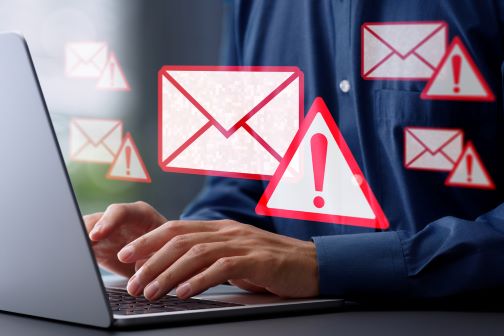Email scams are on the rise and they can be extremely hard to spot – here are some tips on how to spot them and protect yourself.
Email scams, or ‘phishing scams’, are used by online criminals to steal financial information and trick victims into handing over personal details.
Scammers will often mimic a legitimate company, asking the recipient to click on a link taking you to a form designed to harvest your details and gain access to your bank account.
The emails can also have hidden malware, which automatically downloads a virus that can track your online activity.
You can cross reference with email addresses linked on the official site of the company that the email claims to be from, and double check that it matches.
Fake addresses will often include random numbers, letters or words that aren’t linked to the organisation that it says it’s linked to.
Most fraudsters will include a link in the email, and if you spot one you can hover your cursor over it to check the url it is taking you to before you click.
You can also check contact details and dates, as criminals will often forget to include key details in the text.
Low quality and blurry logos may indicate a fake email, but you can check the company’s official website and compare the branding to spot any differences.
Sham branding attempts will often be combined with spelling and grammar errors throughout the text, which can be a tell-tale sign of scammers.
If you accidentally click through to a website linked in an email, it’s important to find out whether it’s actually authentic or not before handing over your personal information.
Which? advises internet users to check the url on domain information checker Who.is to check when the site originated – a new site is often a sign that the url was set up for a scam.
One of the clearest signs of a scam is an unexpected email asking for personal or bank details without any prior contact.
Most companies would never ask for sensitive information over email.
Finally, if you feel under any kind of pressure or time constraints, it’s important to pause and check whether the email is really from who it says it’s from.
Martin Richardson, senior partner at National Fraud Helpline, said: “Everyday we are all bombarded with scam emails.
“Sadly, scam emails are on the rise. Our number one rule is that if you have any doubt at all do not click on a link.
“People who need to get hold of you will find a way.”
Email scams can be reported by forwarding the email to report@phishing.gov.uk
Fin more information here: Avoiding Email and Phishing Scams
Lost money to an email or phishing scam? Contact the National Fraud Helpline. Call 0333 0033219 or fill out our Claim Form.
